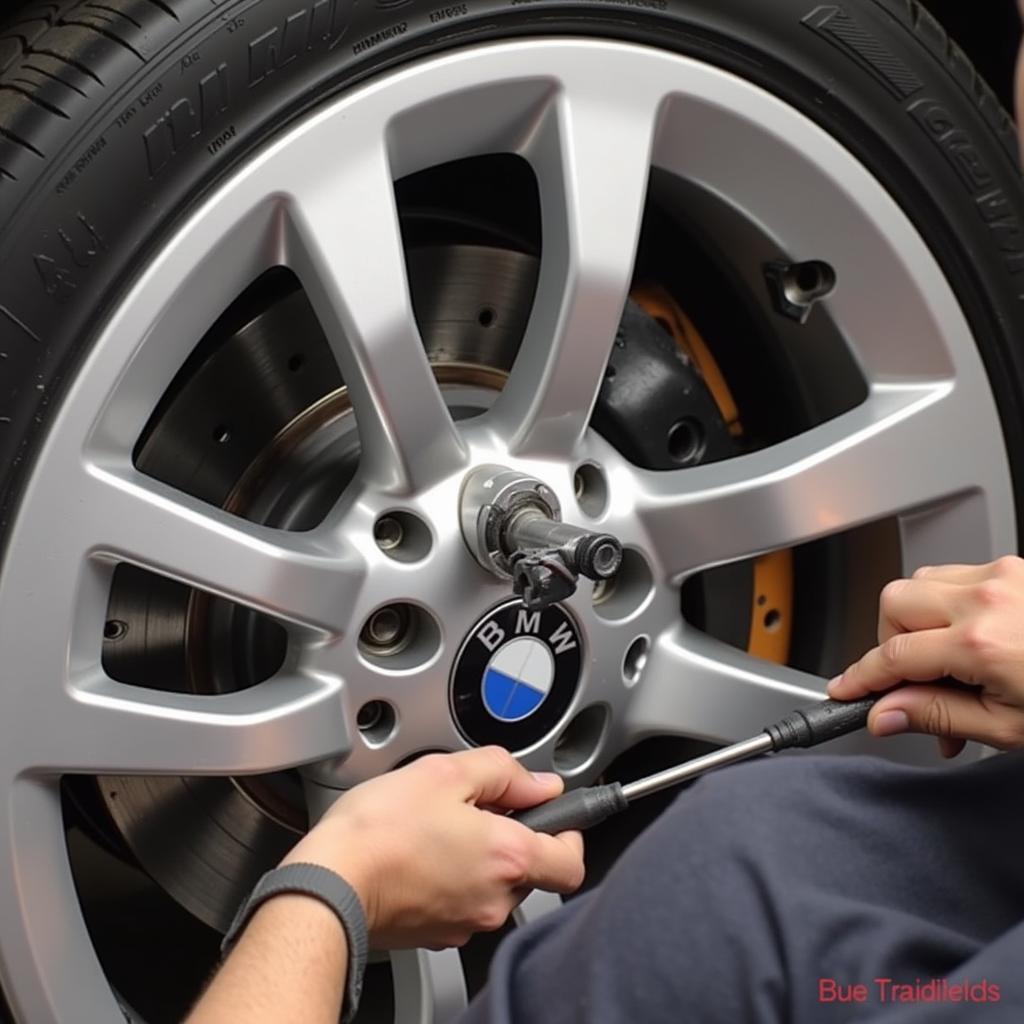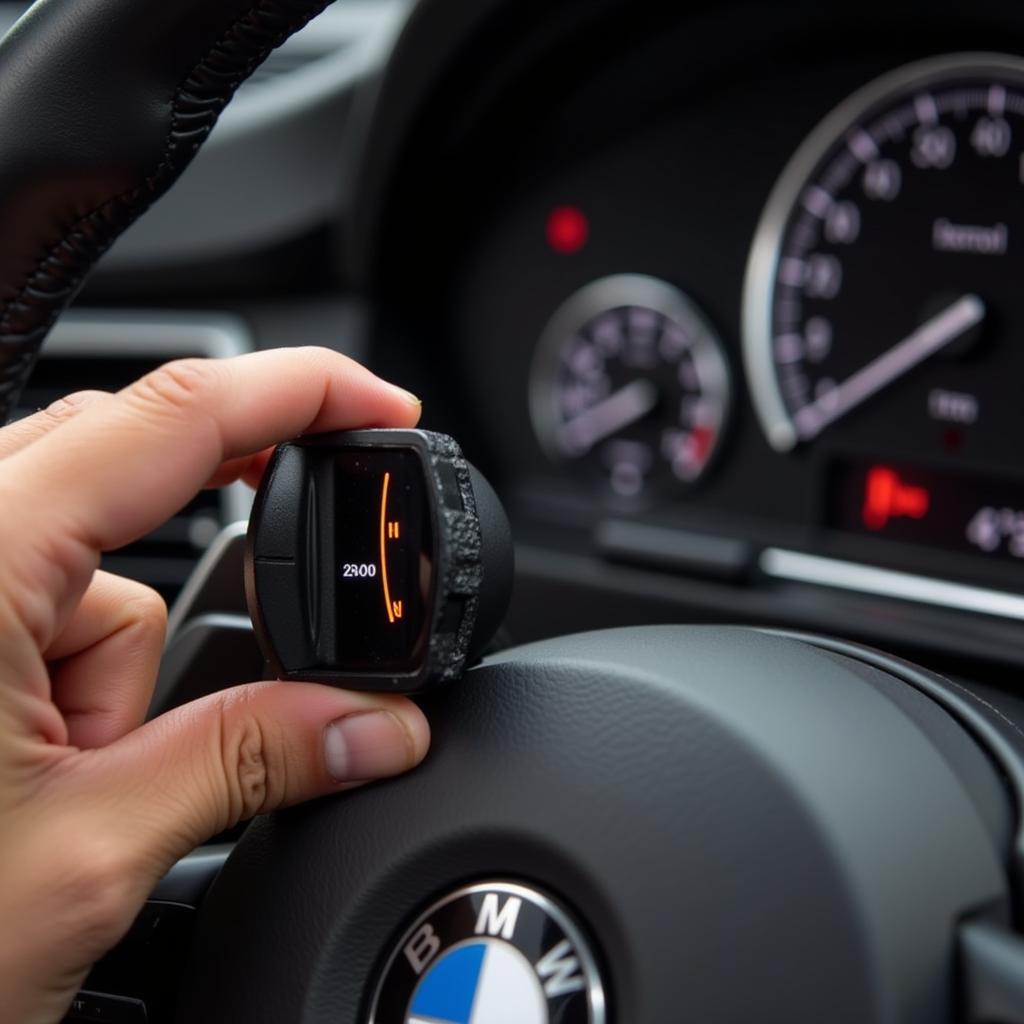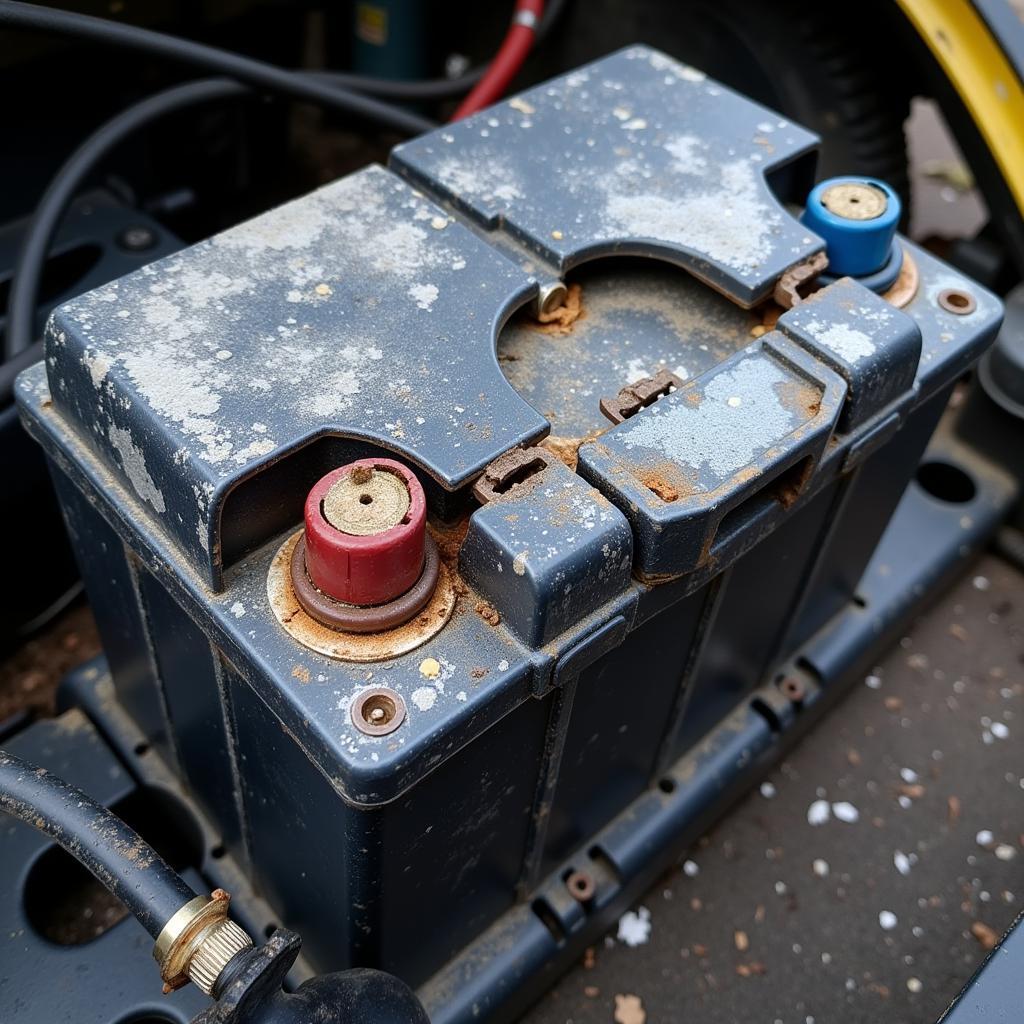The BMW ABS brake warning light can be a source of anxiety for drivers. Understanding bmw abs brake warning light meanings is crucial for maintaining your vehicle’s safety. This article provides a detailed explanation of the various causes, diagnostic procedures, and potential solutions for this common issue.
As a specialist in automotive electrical engineering, with expertise in remote diagnostics, programming, and software installation for vehicle repairs, I often see drivers confused about their BMW’s ABS warning light. The anti-lock braking system (ABS) is a vital safety feature that prevents wheel lockup during hard braking, allowing you to maintain steering control. So, when that light illuminates, it’s natural to be concerned. While sometimes a simple glitch, the warning light could indicate a serious problem requiring immediate attention. This article will guide you through everything you need to know.
Decoding the BMW ABS Warning Light
The ABS warning light is typically amber or yellow and shaped like a circle with an exclamation point inside, surrounded by parentheses. When illuminated, it signals a potential issue within the ABS system. Ignoring this warning can compromise your safety, potentially leading to increased stopping distances and loss of control during emergency braking.
After the initial check, if the light persists, it’s time for a more thorough investigation. For instance, issues with the 2011 bmw 328i brake warning light can stem from various components within the ABS system.
Common Causes of the ABS Warning Light
Several factors can trigger the ABS warning light. Some common culprits include:
- Low Brake Fluid: The ABS system relies on adequate brake fluid pressure. Low fluid levels can trigger the warning light.
- Faulty ABS Wheel Speed Sensors: These sensors monitor the rotational speed of each wheel. A malfunctioning sensor can disrupt the ABS system.
- Damaged ABS Module: The ABS module is the brain of the system. A faulty module can lead to a variety of ABS issues.
- Wiring Problems: Damaged or corroded wiring within the ABS system can disrupt communication and trigger the warning light.
- Brake Pad Wear: While not directly related to the ABS system, worn brake pads can sometimes indirectly trigger the ABS light, particularly on newer models.
Diagnosing the ABS Warning Light
Diagnosing the specific cause of the ABS warning light requires specialized diagnostic tools. Connecting a diagnostic scanner to your BMW’s OBD-II port allows access to the ABS system’s fault codes. These codes pinpoint the specific area of concern, enabling a more accurate diagnosis.
 BMW ABS Diagnostic Scanner in Use
BMW ABS Diagnostic Scanner in Use
Furthermore, understanding the specific warning lights in different models, like the car bmw 3 brake warning light, is essential for accurate diagnosis.
Troubleshooting and Repair Options
Once the problem has been diagnosed, the necessary repairs can be undertaken. These may include:
- Topping off Brake Fluid: If low brake fluid is the cause, simply adding fluid may resolve the issue.
- Replacing Faulty Sensors: Damaged wheel speed sensors typically need replacement.
- Repairing or Replacing the ABS Module: Depending on the extent of the damage, the ABS module may be repairable or require replacement.
- Addressing Wiring Issues: Damaged wiring needs repair or replacement to restore proper function.
“Regular maintenance, including brake inspections and fluid checks, can prevent many ABS issues,” says Michael Schmidt, a seasoned automotive engineer with over 20 years of experience. He emphasizes that “Addressing warning lights promptly is crucial, as ignoring them can lead to more extensive and costly repairs down the road.”
 Replacing a BMW ABS Wheel Speed Sensor
Replacing a BMW ABS Wheel Speed Sensor
Preventing Future ABS Issues
Regular brake system maintenance is crucial for preventing ABS problems. This includes regular brake fluid flushes, inspections of brake lines and components, and timely brake pad replacements.
 Checking BMW Brake Fluid Levels
Checking BMW Brake Fluid Levels
Furthermore, keeping an eye on the bmw e46 brake fluid warning light can help prevent future ABS issues.
Conclusion
The BMW ABS brake warning light serves as a critical safety indicator. Understanding bmw abs brake warning light meanings empowers you to take appropriate action and maintain your vehicle’s safety. Don’t ignore this warning. Prompt diagnosis and repair are essential to ensure optimal braking performance and prevent potential accidents. For further information on BMW brake warning lights, refer to resources like bmw warning lights brake.
FAQ
-
What does the BMW ABS light look like? It’s usually an amber or yellow circle with an exclamation point inside, surrounded by parentheses.
-
Can I drive with the ABS light on? While you can still drive, your ABS functionality is compromised. Seek professional diagnosis and repair as soon as possible.
-
How much does it cost to fix the BMW ABS light? The cost depends on the underlying cause and can range from a simple fluid top-up to more expensive module replacements. Resources like bmw brake pads worn warning can help you understand related issues.
-
How do I reset the BMW ABS light? The light will reset automatically once the issue is resolved.
-
Can low brake fluid cause the ABS light to come on? Yes, low brake fluid can trigger the ABS warning light.
-
What should I do if my ABS and brake light come on together? This usually indicates a more serious braking system problem. Stop driving immediately and have your car towed to a qualified mechanic.
-
How often should I have my BMW’s brakes checked? It’s recommended to have your brakes inspected at least once a year or as recommended in your owner’s manual.


